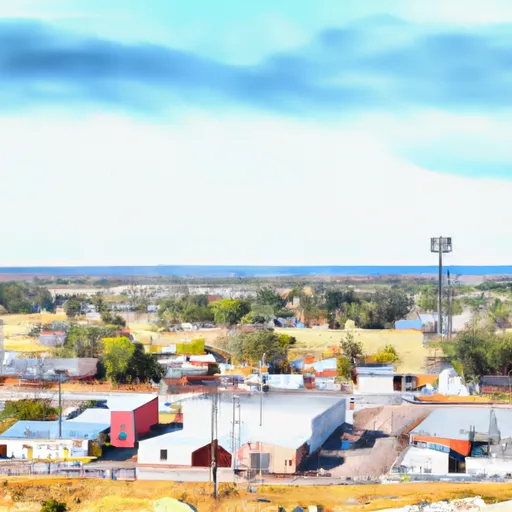-
 Snoflo Premium
Snoflo Premium
Get unlimited access to all our content
With no Ad interruptions! - Start Your Free Trial Login with existing account
Nucla
Eden Index
Climate
8.6
•
Recreation
2.4
•
Community
2.0
•
Safeguard
4.8/10

Nucla, Colorado is a small town nestled in the western part of the state. The climate in Nucla is characterized by hot summers and cold winters. Summers are typically sunny with temperatures averaging in the mid-80s°F, making it ideal for outdoor activities such as hiking, biking, and camping. Winters, on the other hand, are cold with temperatures dropping below freezing and snowfall being a common occurrence. The town is surrounded by stunning natural landscapes, including the nearby Uncompahgre National Forest and Paradox Valley, offering excellent outdoor recreation opportunities such as fishing, hunting, and wildlife viewing. Nucla is also known for its proximity to the West Dolores River, which provides opportunities for water-based activities like fishing and boating.
What is the Eden Index?
The Snoflo Eden Index serves as a comprehensive rating system for regions, evaluating their desirability through a holistic assessment of climate health, outdoor recreation opportunities, and natural disaster risk, acknowledging the profound impact of these factors on livability and well-being.
Climate Health Indicator (CHI): 8.6
Nucla receives approximately
378mm of rain per year,
with humidity levels near 50%
and air temperatures averaging around
10°C.
Nucla has a plant hardyness factor of
6, meaning
plants and agriculture in this region thrive during a short period during spring and early summer. Most
plants will die off during the colder winter months.
By considering the ideal temperature range, reliable water supplies, clean air, and stable seasonal rain or snowpacks, the Climate Health Indicator (CHI) underscores the significance of a healthy climate as the foundation for quality living.
A healthy climate is paramount for ensuring a high quality of life and livability in a region, fostering both physical well-being and environmental harmony. This can be characterized by ideal temperatures, reliable access to water supplies, clean air, and consistent seasonal rain or snowpacks.
Weather Forecast
Streamflow Conditions
Upper Colorado-Dolores
Area Rivers
Upper Colorado-Dolores
Snowpack Depths
Upper Colorado-Dolores
Reservoir Storage Capacity
Upper Colorado-Dolores
Groundwater Levels
Recreational Opportunity Index (ROI): 2.4
The Recreational Opportunity Index (ROI) recognizes the value of outdoor recreational options, such as parks, hiking trails, camping sites, and fishing spots, while acknowledging that climate plays a pivotal role in ensuring the comfort and consistency of these experiences.
Access to outdoor recreational opportunities, encompassing activities such as parks, hiking, camping, and fishing, is crucial for overall well-being, and the climate plays a pivotal role in enabling and enhancing these experiences, ensuring that individuals can engage in nature-based activities comfortably and consistently.
Camping Areas
| Campground | Campsites | Reservations | Toilets | Showers | Elevation |
|---|---|---|---|---|---|
| Mavreeso | 19 | 7,685 ft | |||
| Big Dominguez | 9 | 7,101 ft | |||
| Cabin Canyon | 11 | 6,518 ft | |||
| Divide Fork | 11 | 8,746 ft | |||
| Miramonte Reservoir - SWA | 50 | 7,728 ft | |||
| Ferris Canyon | 7 | 6,566 ft |
Catastrophe Safeguard Index (CSI):
The Catastrophe Safeguard Index (CSI) recognizes that natural disaster risk, encompassing floods, fires, hurricanes, and tornadoes, can drastically affect safety and the overall appeal of an area.
The level of natural disaster risk in a region significantly affects safety and the overall livability, with climate change amplifying these risks by potentially increasing the frequency and intensity of events like floods, fires, hurricanes, and tornadoes, thereby posing substantial challenges to community resilience and well-being.
Community Resilience Indicator (CRI): 2.0
The Community Resilience Indicator (CRI) recognizes that education, healthcare, and socioeconomics are crucial to the well-being of a region. The CRI acknowledges the profound impact of these elements on residents' overall quality of life. By evaluating educational resources, healthcare accessibility, and economic inclusivity, the index captures the essential aspects that contribute to a thriving community, fostering resident satisfaction, equity, and social cohesion.

